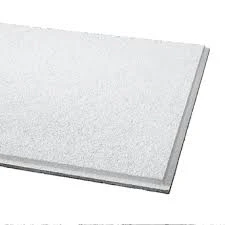8 月 . 11, 2024 11:00 Back to list
Exploring the Benefits and Applications of Cross Tee Ceiling Systems in Modern Interior Design
Understanding Cross Tee Ceilings A Comprehensive Overview
Cross tee ceilings, often seen in commercial and institutional buildings, are a significant aspect of modern architectural design. This system involves the use of cross tees, which are lightweight metal or vinyl strips that create a grid-like pattern, functioning as the framework to support ceiling tiles or panels. This article aims to explore the characteristics, advantages, applications, and installation processes associated with cross tee ceilings.
Characteristics of Cross Tee Ceilings
A cross tee ceiling primarily consists of two components main tees and cross tees. The main tees run the length of the ceiling, while the cross tees intersect them perpendicularly. Together, they form a grid layout that provides a stable structure for the lightweight ceiling tiles that are fitted in the squares created by this grid. These ceilings can accommodate various tile sizes and materials, allowing for a versatile design that can suit different aesthetic needs.
The use of cross tee ceilings can create a well-defined visual structure in a room, giving a modern yet functional appeal. The grid pattern can also serve practical purposes, such as facilitating the installation of lighting fixtures, air conditioning vents, and other ceiling-mounted systems while keeping them hidden from direct view.
Advantages of Cross Tee Ceilings
One of the main advantages of cross tee ceilings is their ease of installation
. The lightweight materials used mean that they can be installed quickly and with minimal labor, significantly reducing construction costs and time. Additionally, these ceilings provide excellent accessibility, allowing for easy removal of tiles for maintenance or repairs without damaging the surrounding structure.Cross tee ceilings also offer flexibility in design. The grid pattern not only enhances the aesthetics but also allows for a variety of finishes and textures. Building owners can experiment with different tile colors and designs, giving them the freedom to adapt the atmosphere of a space according to its function—be it professional, casual, or welcoming.
cross tee ceiling

Moreover, cross tee ceilings can improve acoustics within a space. The ceiling tiles often possess sound-absorbing properties, helping to reduce noise levels in busy commercial environments. This is especially beneficial in areas where communication is crucial, such as offices, conference rooms, and educational institutions.
Applications in Architecture
Cross tee ceilings find themselves in numerous applications across various sectors. Most commonly, they can be seen in offices, schools, hospitals, and retail establishments. Their adaptability makes them suitable for both high-traffic areas and calm, subdued environments. Offices often utilize these ceilings to integrate lighting and ventilation solutions seamlessly while ensuring a professional appearance.
Furthermore, in educational settings, cross tee ceilings contribute to both functionality and aesthetics, creating a conducive learning environment that can positively affect student concentration and performance. They are also a popular choice in healthcare facilities, where cleanliness and maintenance are paramount, as these ceilings can be washed down and easily replaced.
Installation Process
Installing a cross tee ceiling requires careful planning and execution. It begins with marking a grid on the ceiling, ensuring that it is square and level. Next, main tees are secured to the main structure, followed by the installation of cross tees at designated intervals, typically set at 2 feet apart. Finally, ceiling tiles are inserted into the grid, securing them in place.
In conclusion, cross tee ceilings represent a blend of functionality, aesthetics, and efficiency in modern architectural design. They offer a range of benefits, from ease of installation and maintenance to acoustic enhancement and design flexibility. Whether in commercial or institutional settings, these ceilings remain a popular choice for their versatility and practicality. As architectural trends evolve, cross tee ceilings will likely continue to play an integral role in shaping our built environments.
-
Revolutionizing Interior Design with Ceilings t grid Suspended SystemNewsOct.29,2024
-
Revolutionizing Ceiling Design with ceiling access panel with Gypsum Tile WaterproofNewsOct.29,2024
-
Revolutionizing Interior Design with PVC Gypsum Ceiling: A Comprehensive GuideNewsOct.29,2024
-
Elevating Interior Design with High quality Mineral Fiber Ceiling TilesNewsOct.29,2024
-
Revolutionizing Interior Design with PVC Gypsum Ceiling: A Comprehensive GuideNewsOct.29,2024
-
Elevating Interior Design with High-Quality Mineral Fiber Ceiling Tiles: A Comprehensive GuideNewsOct.29,2024







